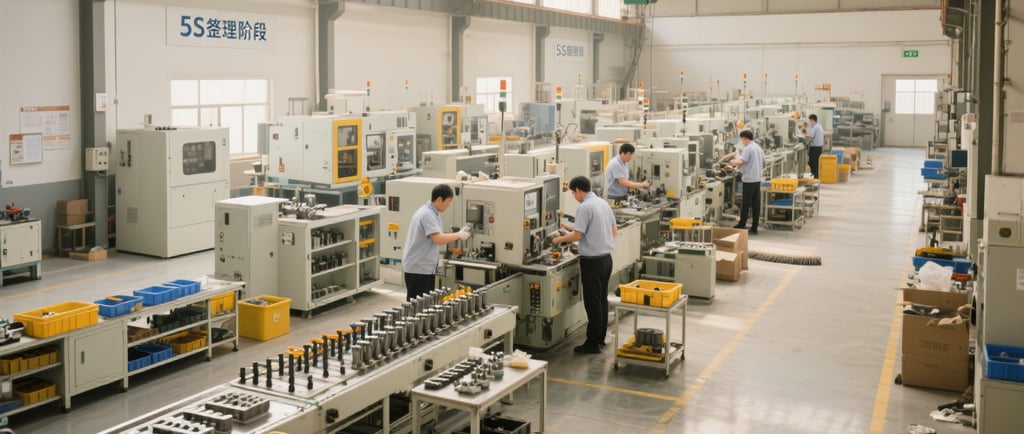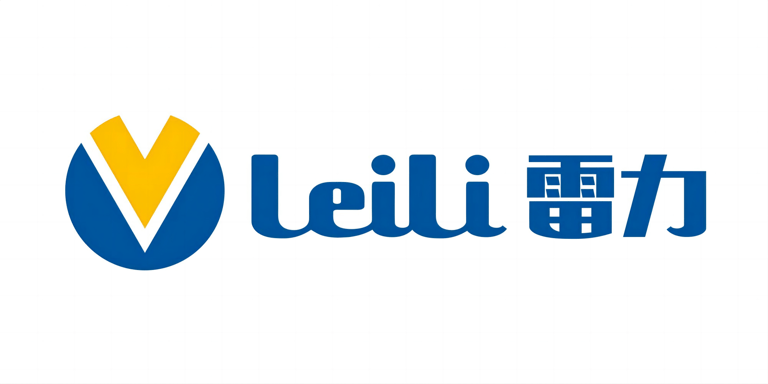Mastering the 5S Management System for Success
Transform your workplace with the 5S Management System. Learn effective implementation steps and discover how Leili Auto Parts benefited. Boost efficiency and organization!
LEILI
Hower Yang
7/13/20254 min read


Implementing the 5S Management System Effectively
The 5S Management System is a powerful tool for improving workplace efficiency and organization. It is rooted in lean management principles and focuses on creating a clean, orderly environment. This system is not just for manufacturing; it can be adapted to various industries.
Implementing 5S involves five key steps: Sort, Set in Order, Shine, Standardize, and Sustain. Each step plays a crucial role in enhancing productivity and reducing waste.
Companies like Leili Auto Parts have successfully adopted the 5S methodology, showcasing its tangible benefits.
This guide will provide practical steps for effective 5S implementation. It will also highlight the importance of employee involvement and leadership support.
Understanding the 5S Management System
The 5S Management System is a structured approach to workplace organization and efficiency. Originally from Japan, it forms part of the broader lean manufacturing philosophy.
At its core, 5S is about creating a clean, well-organized environment that optimizes productivity and safety. It involves sorting items, organizing tools, cleaning spaces, standardizing procedures, and maintaining these practices.
Here's a quick look at the 5S principles:
Sort: Remove unnecessary items.
Set in Order: Arrange tools for easy access.
Shine: Keep the workplace clean.
Standardize: Implement uniform procedures.
Sustain: Ensure ongoing compliance and improvement.
Understanding these concepts is crucial for successful implementation, no matter the industry.
The 5S Principles Explained
The 5S principles form the foundation of an effective workspace transformation. By following these steps, organizations can achieve a significant increase in efficiency and safety. Each principle builds on the previous one, ensuring lasting improvement.
Here's a closer look at these principles:
Sort: Eliminate clutter by removing nonessential items.
Set in Order: Arrange remaining items for optimal efficiency.
Shine: Implement routine cleaning to maintain order.
Standardize: Develop consistent procedures.
Sustain: Ensure ongoing practice and improvement.
The systematic application of these steps brings about substantial organizational benefits.
Sort: Removing the Unnecessary
The first step, Sort, involves identifying and eliminating unnecessary items from the workplace. Decluttering enhances workflow and reduces confusion.
Consider these actions when sorting:
Identify: Separate necessary from unnecessary items.
Categorize: Label items for clarity.
Eliminate: Remove or discard non-essentials.
By focusing on sorting, teams clear space to boost productivity and enhance safety. Implementing this step is essential for simplifying work areas and focusing on important tasks.
Set in Order: Organizing for Efficiency
Set in Order is about arranging all necessary items for effective and efficient retrieval. This stage involves creating a logical, intuitive order in the workspace.
Key steps include:
Arrange: Position items based on frequency of use.
Label: Use labels for quick identification.
Position: Strategically place tools for efficiency.
Set in Order minimizes time spent searching for tools or materials. By reducing retrieval time, employees can focus on task execution rather than preparation.
Shine: Creating a Clean Workplace
Shine focuses on cleanliness and ongoing maintenance of the workplace. A clean environment boosts morale and prevents health and safety risks.
Consider these guidelines:
Clean: Perform regular cleaning.
Inspect: Check equipment for maintenance needs.
Protect: Use protective measures to prevent dirt buildup.
Shine highlights the importance of a tidy workspace, contributing to productivity and employee satisfaction. Maintaining cleanliness ensures a pleasant and safe working environment.
Standardize: Establishing Consistency
Standardize aims to create uniform procedures, ensuring consistency in the workplace. Establishing standard practices helps in sustaining the initial 5S steps.
Consider these approaches:
Develop: Create guidelines and checklists.
Train: Educate employees on procedures.
Monitor: Ensure compliance through regular checks.
By establishing standards, organizations achieve consistency and predictability in operations. This step ensures longevity in improvements and fosters a sense of reliability.
Sustain: Maintaining and Improving
Sustain is about perpetuating the 5S practices and encouraging continual improvement. It requires commitment from everyone in the organization.
Key strategies include:
Review: Conduct regular audits.
Encourage: Foster a culture of continuous improvement.
Train: Provide ongoing education and motivation.
Sustain ensures that 5S principles are ingrained in the organizational culture. Continuously revisiting the steps leads to enhanced processes and workplace excellence.
Steps to Implement the 5S Methodology
Implementing the 5S Methodology requires careful planning and execution. Start by obtaining leadership commitment and engaging team members from the beginning. Form a cross-functional team to oversee the implementation process. This ensures all perspectives are considered and enhances buy-in.
Next, conduct an initial assessment to identify areas that need improvement. Set clear goals, and establish a timeline for each phase of the process.
Key steps for implementation include:
Education: Train all employees on 5S principles and benefits.
Pilot Program: Start in a small area to demonstrate effectiveness.
Rollout: Expand the program across all departments.
By following these steps systematically, you can transform your workplace into a more organized and efficient environment.
Key Success Factors for 5S Implementation
Achieving success with the 5S Management System hinges on several critical factors. Firstly, ensure ongoing support from leadership, as their commitment sets the tone for the entire organization. Leaders should actively participate to demonstrate their dedication.
Additionally, effective communication is crucial. Keep employees informed of goals, progress, and benefits to foster a culture of transparency.
Other essential success factors include:
Continuous Training: Refresh employees' understanding of 5S principles.
Regular Audits: Evaluate adherence and address deviations promptly.
Employee Engagement: Encourage feedback and participation at all levels.
These elements drive sustained improvement and ensure long-term success.
Case Study: Leili Auto Parts and 5S Success
Leili Auto Parts embraced the 5S Management System to boost efficiency across their operations. The initiative led to notable improvements, setting an example for others in the industry.
Key achievements included:
Reduced Waste: Streamlined processes decreased material waste.
Improved Safety: Cleaner workspaces minimized accidents.
Enhanced Productivity: Organized tools accelerated workflow.
By following the 5S principles diligently, Leili Auto Parts not only improved operational efficiency but also boosted employee morale. This success underscores the tangible benefits of implementing the 5S methodology.
Common Challenges and How to Overcome Them
Implementing the 5S Management System can face several hurdles. Resistance to change is a common issue. Employees may be skeptical of new processes.
To address these challenges:
Engage Employees: Involve them from the start.
Provide Training: Equip them with necessary skills.
Communicate Benefits: Highlight efficiency gains and improvements.
By addressing these challenges proactively, organizations can ensure smoother 5S adoption. Ensuring consistent communication and support will promote long-term success.
Benefits of the 5S Management System
The 5S Management System offers numerous advantages. It enhances productivity by minimizing waste and optimizing workflows.
Key benefits include:
Improved Efficiency: Streamlines operations and reduces time wastage.
Enhanced Safety: Keeps work areas clean and orderly.
Higher Employee Morale: Creates an organized and pleasant workplace.
These benefits contribute to a culture of continuous improvement, driving long-term success. Implementing 5S not only improves operations but also boosts employee satisfaction and workplace safety.
Conclusion: Building a Culture of Continuous Improvement
Adopting the 5S Management System is more than just a process. It's about instilling a mindset of ongoing progress. This system cultivates a proactive approach to workplace challenges.
Through consistent application of the 5S principles, organizations can achieve lasting enhancement. This sustainable change fosters a work culture that values organization and efficiency, leading to continuous improvement over time.
